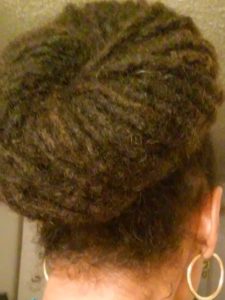 If your mom has dreadlocks, with Mother’s Day just around the corner, what better gift to show your love, than to give her a locs makeover on this special day.
If your mom has dreadlocks, with Mother’s Day just around the corner, what better gift to show your love, than to give her a locs makeover on this special day.
Makeovers come in many forms, whether you choose to get a new hairstyle or get a deep treatment for her locs, that’s still a great way to show your love for Mom this year.
Great Ideas for Mother’s Day Makeover
Pamper your mom on Mother’s Day with a scalp massage. She may be stressed and would love to get at least a day where she’s taken care of, instead of the other way around.
- Massage Her Stress Away-Mother’s Day Gift
Get her a scalp massage brush for locs, and give her a shampoo. This shampoo won’t be the typical everyday shampoo, because it will be much more special with exfoliation of her scalp, leaving it tingly and relaxed.
- Make it Fun with Dreadlocks Jewelry
Adorn your mom’s dreads with jewelry for locs. She will really appreciate it. There are a wide variety of them, some of which are gold, silver, beads, or made from natural bamboo.
Get Mom a Locs Gift on Mother’s Day
One gift that anyone with locs would appreciate, is something to dry their hair after washing it. You can give Mom a cap bonnet hair dryer attachment. This is perfect for someone with a lot of locs. It is designed to hold in the right amount of heat to get her hair dried quickly.
- Get a Beautiful Locs Hairstyle for Mom
Give your mom a nice hairstyle to complement all the pampering you’ve given her for Mother’s Day. Re-twist and surprise her with a hairstyle that will last for a week at the most. If you’re not too hands-on with styling hair, bring her to a loctician who specializes in cool dreadlocks hair designs.
